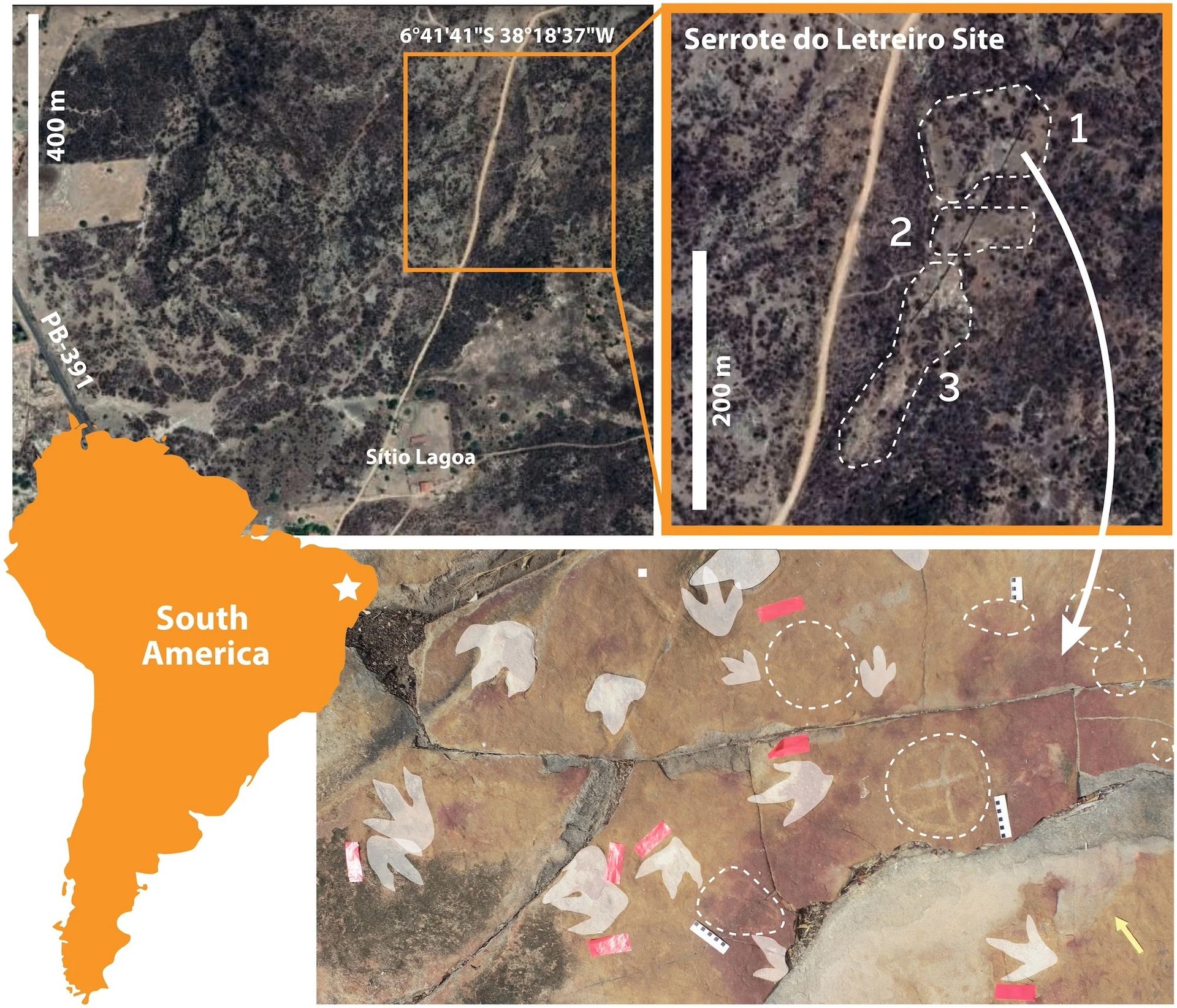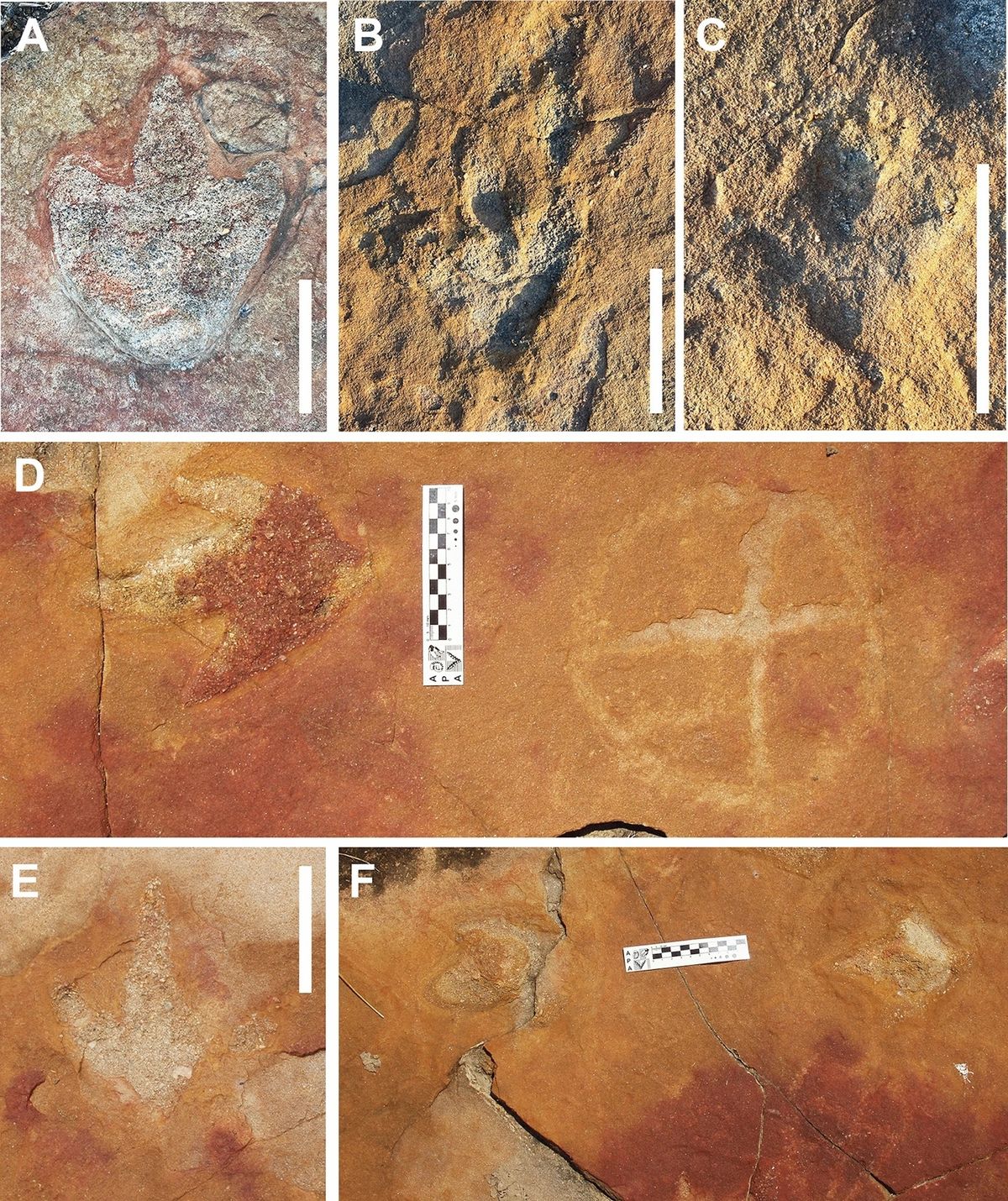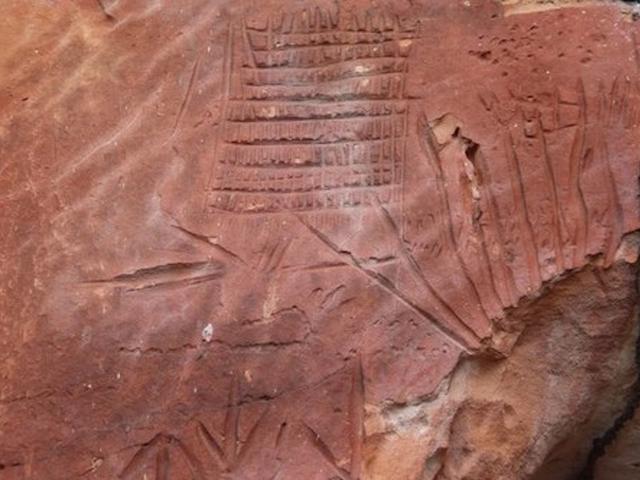A study published this week in the journal Scientific Reports reveals that archaeologists in the northeastern Brazilian state of Paraíba have discovered a link between human-made petroglyphs and the nearby fossilised dinosaur footprints from the Early Cretaceous Period. The researchers contend that the rock art was specifically created around the already more than 100-million-year-old tracks with a deliberation not to disturb them. The meaning behind this act remains unknown.
“Despite the profusion of identified petroglyphs, no overlap was observed between these inscriptions and the fossilised footprints,” write the archaeologists and palaeontologists Leonardo P. Troiano, Heloísa B. dos Santos, Tito Aureliano and Aline M. Ghilardi in their report. “In none of the cases was it found that the creation of a petroglyph resulted in damage to the existing footprints, suggesting thoughtfulness by the makers.”
Found on three rock outcrops over more than 15,000 sq. m at the Serrote do Letreiro Site in Vale dos Dinossauros (“Dinosaur Valley”) Natural Monument, the petroglyphs have circular, abstract motifs and are similar to others in the region—radiocarbon dating of human burials in the surrounding area suggests that they date to between 2,620 and 9,400 years ago. The outcrops also feature the footprints of various kinds of dinosaurs, including theropods, sauropods and iguanodontia. (The area has been researched since the 1970s, but this latest study draws a connection between the tracks and petroglyphs for the first time.)

Location of the “Serrote do Letreiro” site and central area of the first and northernmost outcrop, with a high concentration of footprints and petroglyphs. (1) Outcrop one, also referred to as Northermost outcrop; (2) Outcrop two, also referred to as middle/central outcrop; (3) Outcrop three, also referred to as Southernmost outcrop. Footprints in highlight and petroglyphs circled by dashed lines. Courtesy Leonardo P. Troiano, Heloísa B. dos Santos, Tito Aureliano and Aline M. Ghilardi; Scientific Reports
While the people who created the petroglyphs were likely unaware of the history of dinosaurs, the study’s authors contend that they may have believed the footprints to be made by rheas, large flightless birds common in Brazil with similar footprints to those of theropods, and now-extinct mastodons that still lived in the area at the time.
The researchers note that humans making rock art around dinosaur footprints is not unique to this case, pointing to similar examples in Australia, Poland and the US—particularly Utah’s Poison Spider Dinosaur Tracks, Parowan Gap and Zion National Park.
“Regardless, in none of these instances do the petroglyphs display such a close-knit relationship with the footprints as in Serrote do Letreiro,” the researchers write, “where it is unquestionable that the engravers acknowledged the footprints and intentionally executed the petroglyphs around them, establishing a symbolic connection between human graphic expression and the fossil record.”



